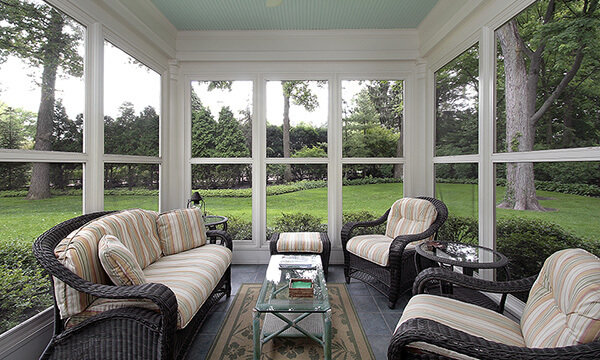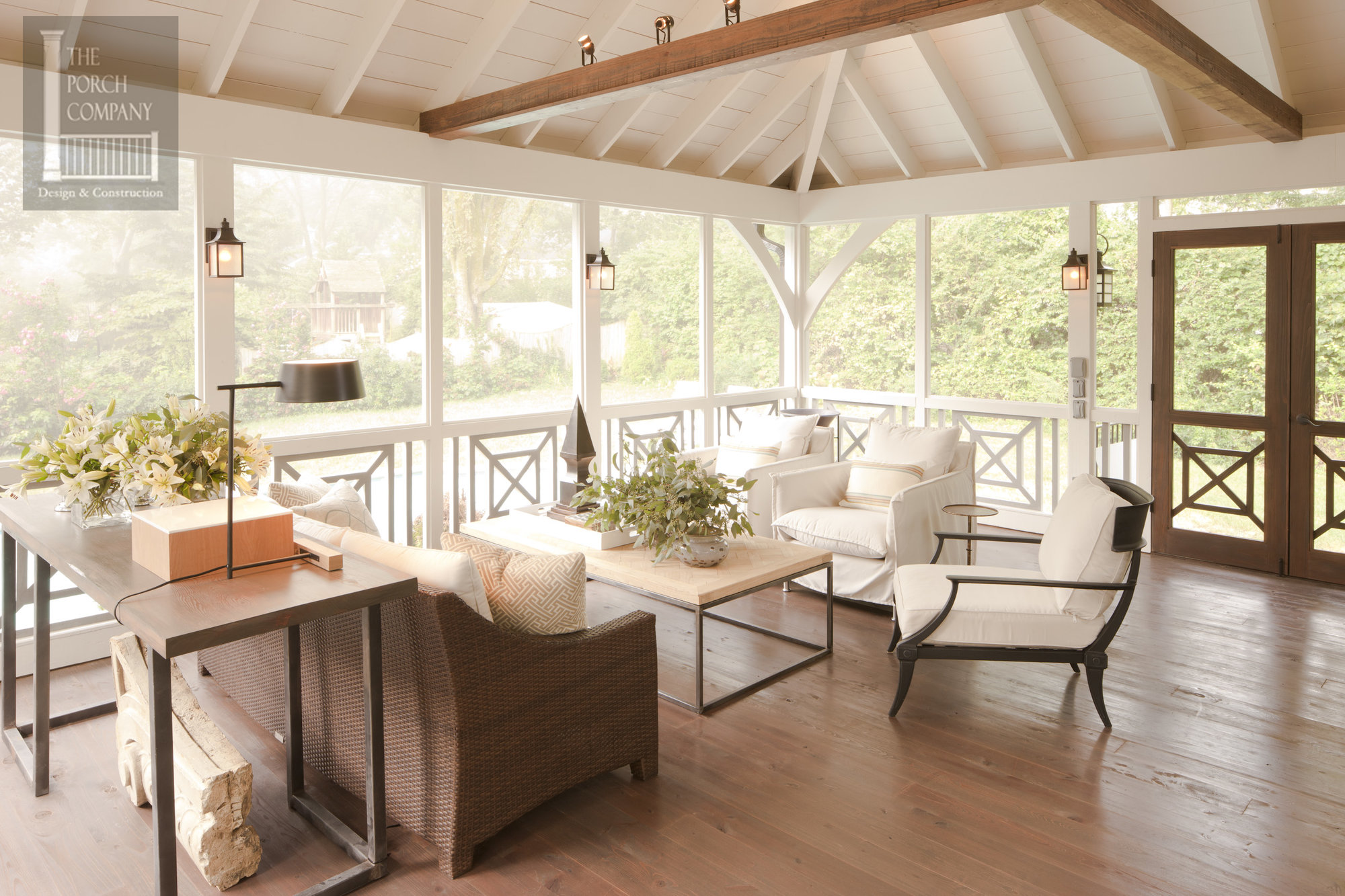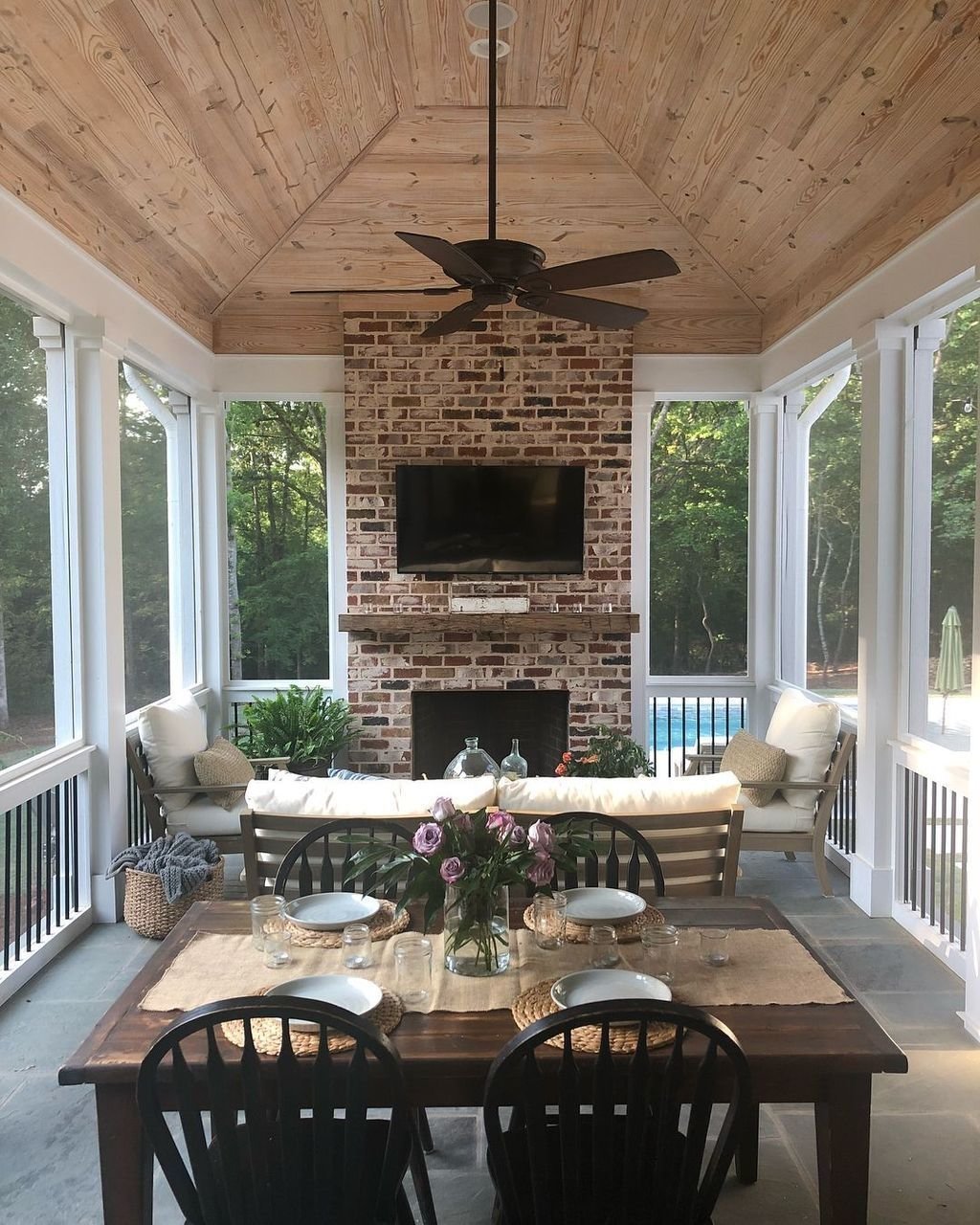Live the Bug Free Life!
So you want to add a screened-in porch to your property to have a light-filled, breezy, bug-free place to relax? Join the  club! But before you launch into construction, you'll of course have to consider how much the renovation will cost. According to 2020 research by Improvenet, "a wrap-around porch that contains windows and screens can run up to a maximum of $30,000." But this is if you're starting completely from scratch, without an existing porch. The good news: There are a few tricks of the trade that will help keep spending down (or up, if you're looking to make yours large and luxe), and the price tag can be well worth it from an investment standpoint.
club! But before you launch into construction, you'll of course have to consider how much the renovation will cost. According to 2020 research by Improvenet, "a wrap-around porch that contains windows and screens can run up to a maximum of $30,000." But this is if you're starting completely from scratch, without an existing porch. The good news: There are a few tricks of the trade that will help keep spending down (or up, if you're looking to make yours large and luxe), and the price tag can be well worth it from an investment standpoint.
Here are three things that will hugely impact the final cost of your screened-in porch project, from the labor involved for the actual installation to design and property taxes.
Location and Property Taxes
Adding a screened porch can absolutely increase your property taxes, and this is the biggest long-lasting expense to consider before calling your contractor. "It depends on which state you live in," clarifies design and renovation consultant Meredith Still, "and if a screened-in porch does increase your property taxes, it would be based on square footage." Since these taxes vary so much from state to state—and even county to county—it's best to do your homework on regional codes and restrictions before you start building (even if you're just adding a screen to an existing porch). The bright side? "I do know that it offers a return on your investment if you ever intend on selling your home," says Still.
Square Footage
The smaller the porch, the more affordable the project will be—because the cost of materials will be lower. Sizing down is one way to minimize costs. If you're just screening in a porch as it already stands, Home Advisor reports that the installation can cost around $2,000: "The total costs $3 to $5 per square foot for materials, and $2 per square foot for labor," for an add-on like this, but "if you want to build a completely new porch with screen, you’ll pay $25 to $120 per square foot for the entire project."
just screening in a porch as it already stands, Home Advisor reports that the installation can cost around $2,000: "The total costs $3 to $5 per square foot for materials, and $2 per square foot for labor," for an add-on like this, but "if you want to build a completely new porch with screen, you’ll pay $25 to $120 per square foot for the entire project."
Materials and Decor
If you're dead-set on a certain square footage and comfortable with the potential rise in taxes that the addition will incur, swapping in budget-friendly materials is one more way to stay on budget.
For your flooring...
According to Still, the best decking hands-down is element-resistant ipe wood, but it's going to be a bit more expensive. Tile is also great but can get pricey, too, and there are plenty of other ways to inject color and personality to your porch. If you're budget conscious but love the look of wood flooring, composite can be a great alternative to real wood. And in terms of affordability, concrete is your best bet (if it's too cool for your liking it's easy to hide under a warm area rug). Brick may be a good option for budget-friendly materials if you really want to avoid concrete.
For your screens...
Pre-cut screens are the most affordable option, so mention using them to your contractor and architect before they even start designing plans. If you want any kind of specialty screens (like wind-resistant, if you live in a super windy region, or allergy-proof if you're sneezy), then they'll be a bit more expensive.
The material your screen is made of can also affect the cost. "There are several different screen types ranging from fiberglass, aluminum, premium metals and sun-blocking screens. Fiberglass is the cheapest option but not the best," says contractor Meredith Still. "To ensure the longevity of the interior of your porch, its best to invest in a screen that will prevent bugs, dust, pollen and UV light from invading the space." She recommends shopping from a brand such as Porch Enclosure System, PollenTEC, and Eze-Breeze if you want to see what options exist in those categories.
invest in a screen that will prevent bugs, dust, pollen and UV light from invading the space." She recommends shopping from a brand such as Porch Enclosure System, PollenTEC, and Eze-Breeze if you want to see what options exist in those categories.
For furniture...
To keep budget down on the front in, opt for affordable outdoor furniture instead of investing in custom upholstered performance fabrics and high-end pieces. (But if you can manage to splurge on these at the outset, they are a good investment and will last longer!) You could also go antiquing or rummaging through a flea market to find oldies but goodies to decorate your porch. "It is also recommended that you use water-proofing fabric spray to prevent the cushions from retaining water," suggests Build.com project expert Maverick Watson, to ensure your resources lasting as long as possible.
Installation Method
DIY
If you already have an existing porch you'd like to screen in and want to do it yourself, you'll save a lot on labor and really only need to account for the cost of materials. Then you'll just need a stapler, pre-cut screens, and steady hand (or a level).
Professional
Of course, construction rates will differ from region to region and team to team. But if you're doing any more than a simple screen install you'll definitely want to bring on a licensed contractor and possibly even an architect. Keep the projects size manageable—the smaller the porch, the less time it'll take to build, so the less labor costs will be—and also consult with them on creative ways to cut costs! A good construction team will know how to get crafty without compromising quality.
Original Article written by MAY 21, 2020 for House Beautiful. Images by Nova Landscape and Design, The Porch Company, Decorafit,
Posted by The Cobb Group on

Leave A Comment